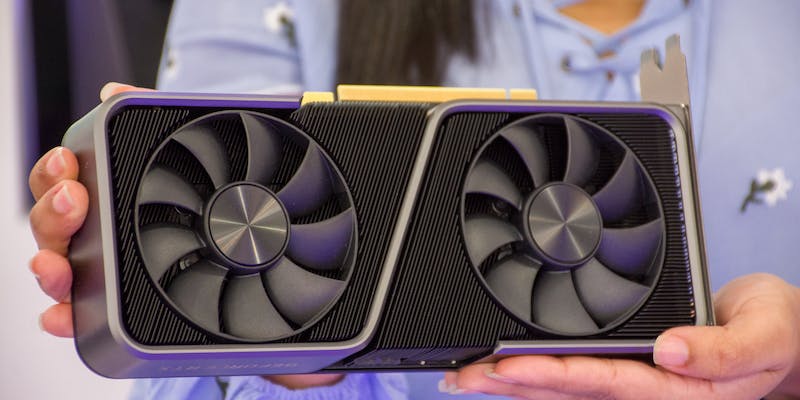Nvidia, renowned for its powerful GPUs, has addressed the disruptive micro-stuttering issues faced by GeForce users through a pertinent hotfix. This glitch, particularly troublesome for gamers and general users alike, disrupts gameplay and computing tasks with abrupt screen judders. It’s notably detrimental when V-Sync is active, a feature designed to match a game’s frame rate with the monitor’s refresh rate to minimize screen tearing, aiming for a fluid visual experience. Unfortunately, micro-stuttering contradicts V-Sync’s purpose, causing considerable user inconvenience. With this hotfix, Nvidia aims to restore the intended seamless performance, reducing the hiccups that have been spoiling the experience for many, and demonstrating their commitment to maintaining the high standards expected of their hardware. This swift action underscores the tech giant’s recognition of the importance of user experience in maintaining their position as a leader in the graphics market.
The Problem and the Hotfix
Gaming Disruption Beyond Screen Tearing
For avid gamers, micro-stuttering isn’t just an irritating glitch; it’s a major disruption to the deep engagement they seek in modern, graphically intense games. These sudden, fleeting lags disrupt the gameplay’s smoothness, which is particularly jarring when it occurs during fast-paced action or crucial moments. This stutter not only impacts the gaming experience but also the general performance of Nvidia-powered systems, leading to skepticism about their reliability. Tasks as routine as web browsing aren’t immune to these hiccups, making even the simplest digital interactions unexpectedly jarring. Such issues can shake a user’s trust in their hardware, expecting it to deliver seamless experience whether they’re navigating the digital landscape or immersed in a virtual world. For a premium setup that promises top-notch performance, the presence of micro-stuttering is a puzzle that enthusiasts are eager to solve in order to restore fluidity and precision to their digital endeavors.
A Beta Solution for Immediate Relief
Nvidia’s rapid deployment of the Game Ready Driver hotfix version 551.23 showcases the company’s commitment to addressing the unwelcome micro-stuttering issue faced by gamers. This provisional patch serves as a beta release, which, although not as comprehensively tested as official drivers, offers immediate mitigation for those disrupted by the glitch. Nevertheless, it’s important to remain cognizant of the trade-offs when installing beta software; such early versions may bring unforeseen bugs or compatibility hiccups that could affect system stability or performance.
Opting for the hotfix could be a calculated risk for users desperate for a quick fix. However, for a more cautious approach, one might prefer to endure the stutter a while longer in anticipation of the next fully vetted official driver update from Nvidia, which is likely to incorporate a more robust and thoroughly examined solution. The decision ultimately rests on the user’s assessment of the immediate need against the potential pitfalls of a beta release. Ultimately, patience might reward those who wait with a smoother, stress-free gaming experience once the final and fully polished update rolls out.
Caution and Implications
Choosing Between Immediate or Tested Fixes
Nvidia’s swift action in delivering a hotfix illustrates their dedication to solving consumer issues swiftly. However, this rapid response places users at a crossroads: to immediately deploy an expedited yet potentially incomplete solution, or to hold out for a thoroughly tested, stable driver release. The provisional nature of a hotfix is a makeshift remedy designed for those overwhelmed by the stuttering problem and who prioritize prompt resolution despite possible risks. This isn’t a trivial choice; opting for the hotfix carries the hazard of introducing new complications to system performance. Users must weigh their tolerance for the current issue against their willingness to risk the stability of their systems with an unrefined patch. It’s a balancing act between the need for immediate functionality and the assurance of long-term reliability, with each user’s decision reflecting their individual circumstances and the criticality of the computer’s stability for their daily operations.
Nvidia’s Responsive Strategy
Nvidia’s swift release of a hotfix underscores their commitment to customer satisfaction and trust. This tactical move demonstrates that Nvidia prioritizes addressing technical issues promptly, even if it means rolling out preliminary solutions ahead of full-scale official driver updates. By doing this, Nvidia not only acknowledges the urgency felt by their users when encountering system problems but also bolsters its image as a client-focused company. Although beta solutions carry inherent risks, Nvidia’s willingness to issue them reflects a broader strategy of rapid response, emphasizing the company’s dedication to maintaining strong user relations. This approach is beneficial for Nvidia as it reassures customers of the company’s attentiveness to their needs, thereby fostering loyalty and confidence in Nvidia’s products and services.

